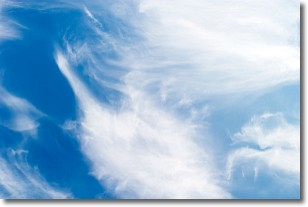Weather Alert in Alaska
Flood Watch issued August 1 at 3:10PM AKDT until August 4 at 3:00PM AKDT by NWS Anchorage AK
AREAS AFFECTED: Lower Matanuska Valley; Sutton / Upper Matanuska Valley; Eureka / Tahneta Pass
DESCRIPTION: * WHAT...Flooding caused by excessive rainfall is possible. * WHERE...The lower Matanuska River near Butte and Palmer as well as small rivers and streams between Sutton and Eureka. * WHEN...From 7 PM AKDT this evening through Monday afternoon. * IMPACTS...Heavy rainfall will lead to rapid runoff and rises in small streams draining the steep terrain along the Glenn Highway between Sutton and Eureka. Landslides are possible in landslide-prone areas along this corridor. Significant runoff is also expected to raise water levels on the Matanuska River, with some locations approaching bankfull by early Sunday morning. River levels may approach or even exceed those observed in early July, with increased bank erosion expected along the lower Matanuska River. While water levels may rise in small streams and rivers across the Matanuska-Susitna Valley, flooding is not expected west of the lower Matanuska River. * ADDITIONAL DETAILS... - Rainfall is expected to move from east to west across the Copper River Basin beginning tonight and lasting through Sunday morning. Projected rainfall totals with this storm are likely around 1 to 2 inches from Mendeltna to Sutton. Precipitation will become enhanced near terrain and along the northeast facing slopes of the Talkeetna and Chugach mountains. The heaviest rainfall is expected within the mountainous terrain along the Glenn Highway corridor between Sutton and Eureka. Ponding of water on roadways and erosion of unpaved surfaces is also possible. The Matanuska River at Palmer (MATA2) is expected to crest Sunday morning at 25100 cfs, which is below minor flood stage (30000 cfs). - Http://www.weather.gov/safety/flood - If you live near or along the Matanuska River, stay alert and be prepared to take action. - All residents on or near mountain slopes should be prepared for possible landslides.
INSTRUCTION: Persons living along streams should stay alert and be prepared to take action if a warning or advisory is issued, or flooding is observed. You should monitor later forecasts and be alert for possible Flood Warnings. Those living in areas prone to flooding should be prepared to take action should flooding develop. Stay tuned to further developments by listening to your local radio, television, or NOAA Weather Radio for further information. Reports on river conditions can be sent to the River Forecast Center by calling 1-800-847-1739
Want more detail? Get the Complete 7 Day and Night Detailed Forecast!
Current U.S. National Radar--Current
The Current National Weather Radar is shown below with a UTC Time (subtract 5 hours from UTC to get Eastern Time).

National Weather Forecast--Current
The Current National Weather Forecast and National Weather Map are shown below.

National Weather Forecast for Tomorrow
Tomorrow National Weather Forecast and Tomorrow National Weather Map are show below.

North America Water Vapor (Moisture)
This map shows recent moisture content over North America. Bright and colored areas show high moisture (ie, clouds); brown indicates very little moisture present; black indicates no moisture.

Weather Topic: What are Wall Clouds?
Home - Education - Cloud Types - Wall Clouds
 Next Topic: Altocumulus Clouds
Next Topic: Altocumulus Clouds
A wall cloud forms underneath the base of a cumulonimbus cloud,
and can be a hotbed for deadly tornadoes.
Wall clouds are formed by air flowing into the cumulonimbus clouds, which can
result in the wall cloud descending from the base of the cumulonimbus cloud, or
rising fractus clouds which join to the base of the storm cloud as the wall cloud
takes shape.
Wall clouds can be very large, and in the Northern Hemisphere they generally
form at the southern edge of cumulonimbus clouds.
Next Topic: Altocumulus Clouds
Weather Topic: What are Altostratus Clouds?
Home - Education - Cloud Types - Altostratus Clouds
 Next Topic: Cirrocumulus Clouds
Next Topic: Cirrocumulus Clouds
Altostratus clouds form at mid to high-level altitudes
(between 2 and 7 km) and are created by a warm, stable air mass which causes
water vapor
to condense as it rise through the atmosphere. Usually altostratus clouds are
featureless sheets characterized by a uniform color.
In some cases, wind punching through the cloud formation may give it a waved
appearance, called altostratus undulatus. Altostratus clouds
are commonly seen with other cloud formations accompanying them.
Next Topic: Cirrocumulus Clouds
Current conditions powered by WeatherAPI.com




